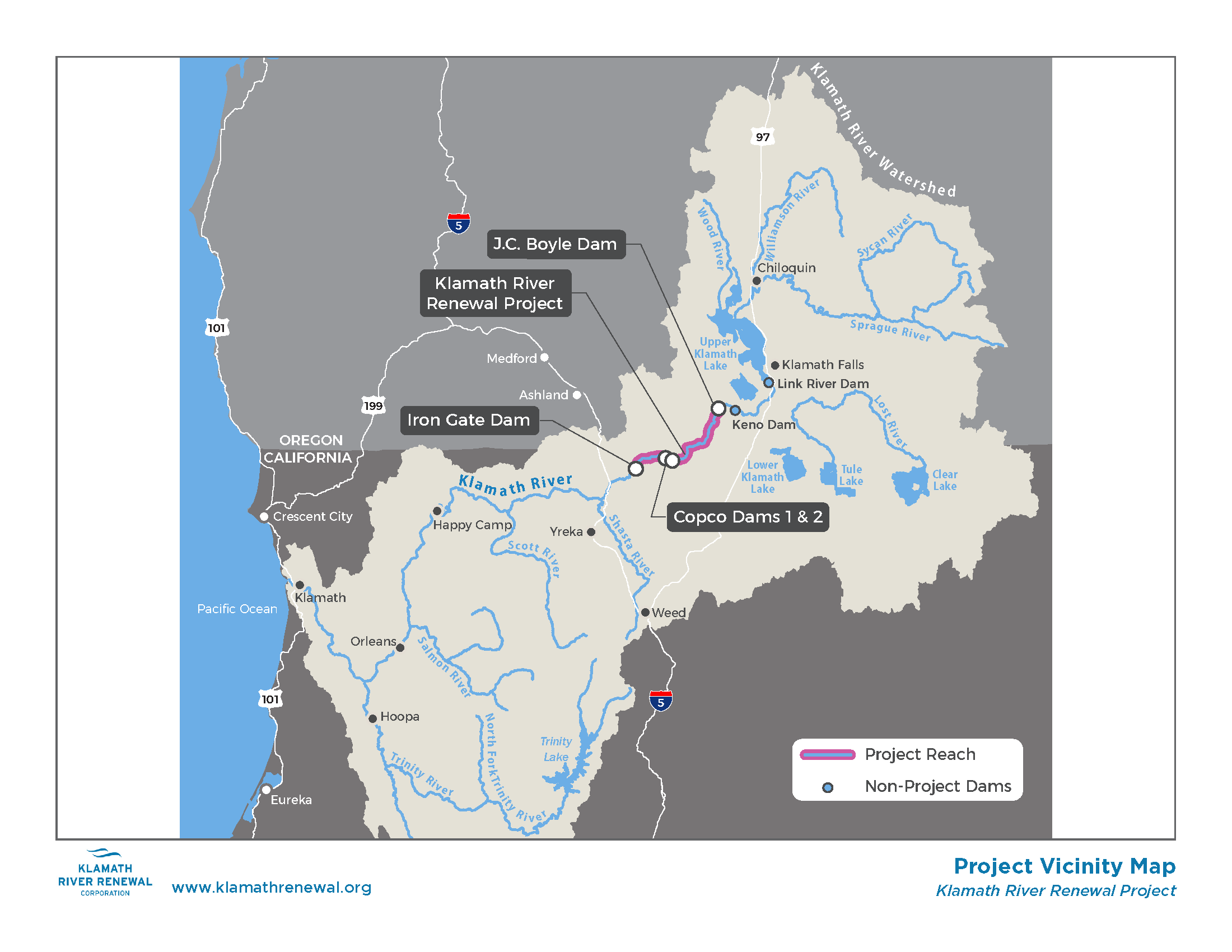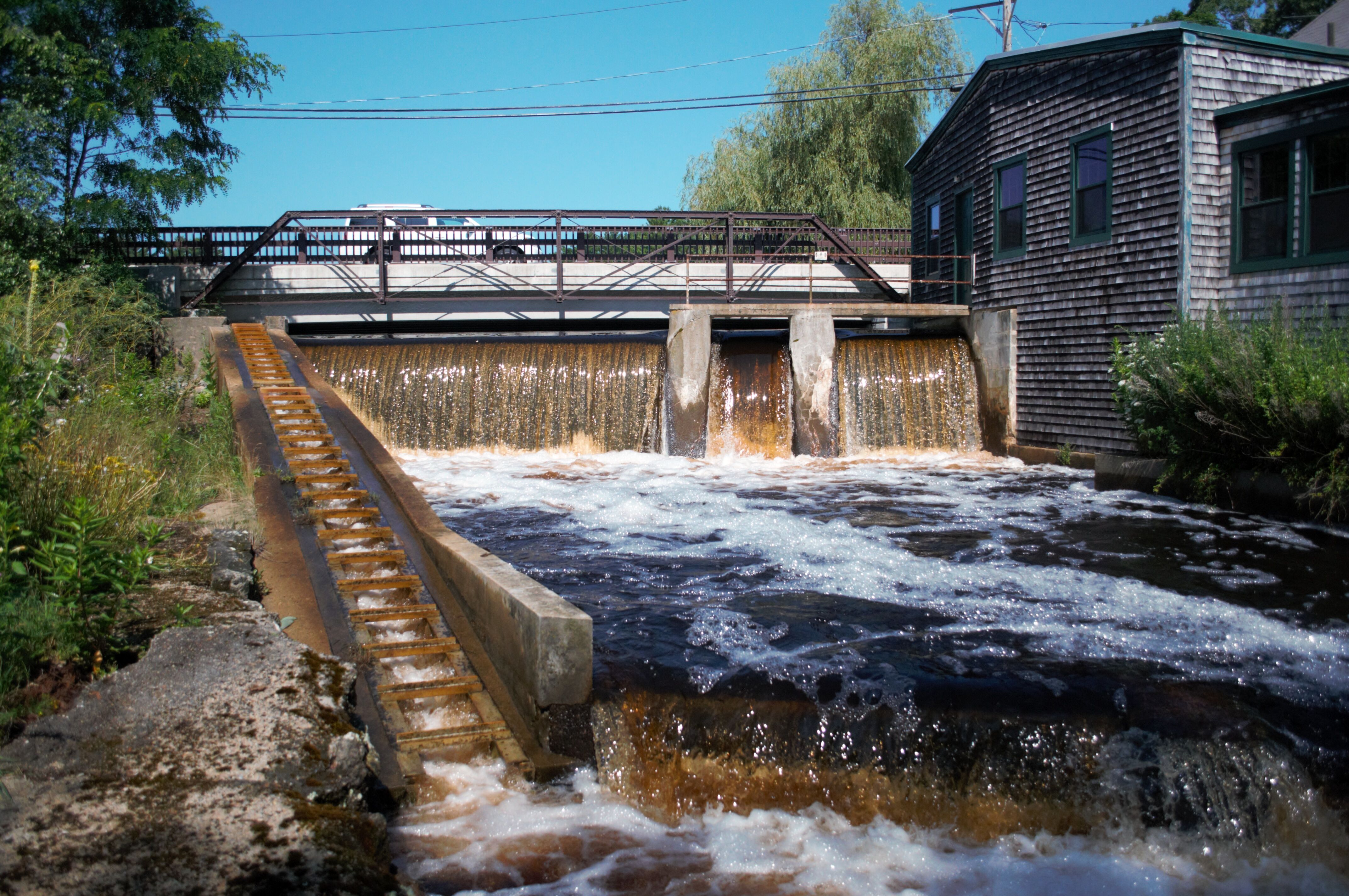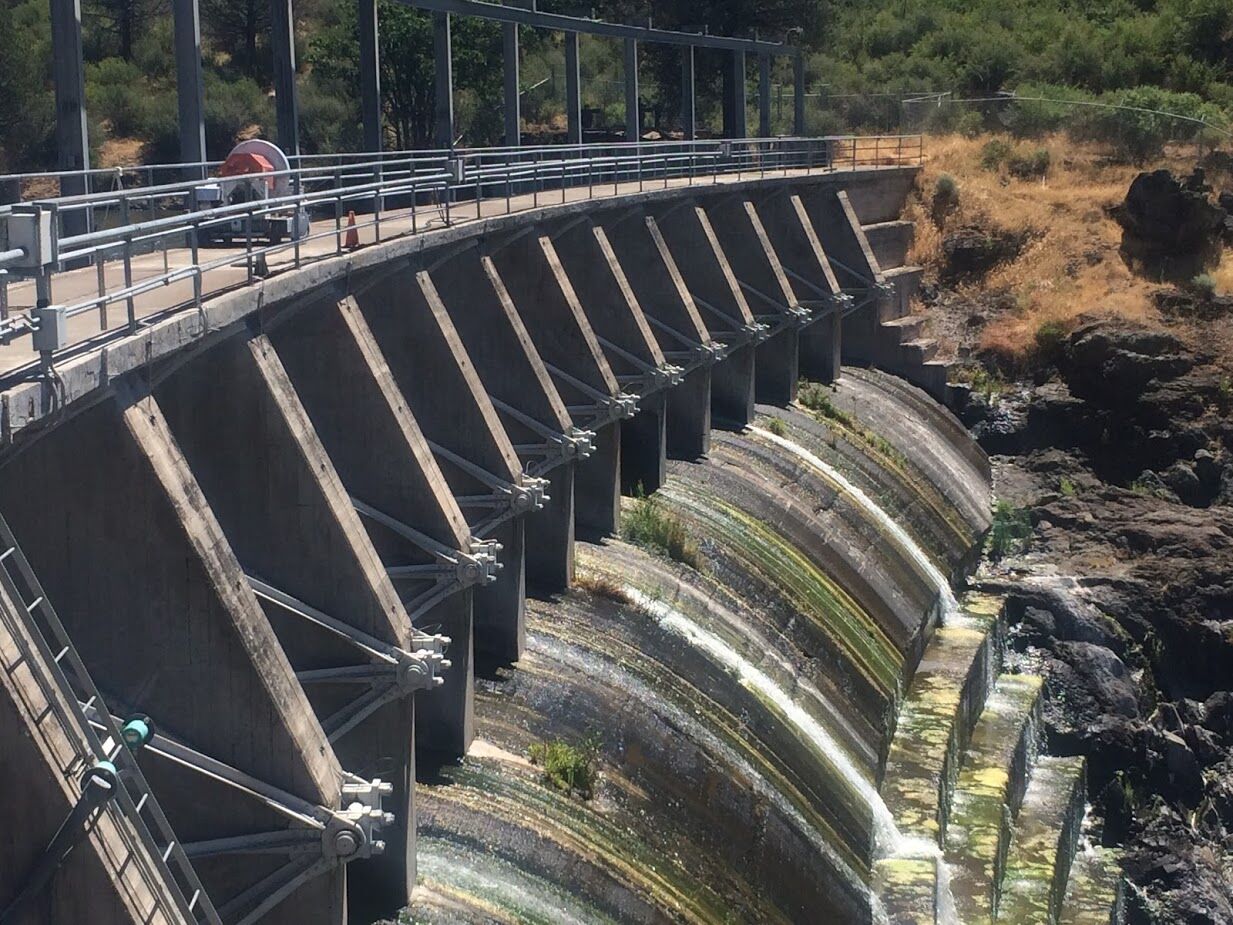Connecting state and local government leaders
In rivers big and small, migratory fish surge back to life as old energy structures are taken down.
When demolition begins in 2022 on four large dams along the Klamath River, it will be the largest removal project in U.S. history. The dams, located at the California and Oregon border, faced an expensive re-licensure process and, given their age, were set to run at an economic loss. As a result, the two states, tribal nations, and other stakeholders formed the Klamath River Renewal Corporation to take ownership of the properties, and eventually return the lands to the public domain. When completed, the project will cap off two decades of accelerated dam removals across the country as early 20th century river structures increasingly give way to the revival of migratory fish and their river ecosystems.
The operational and financial structures required to remove the Klamath dams, which are owned and operated by Portland-based utility PacifiCorp, a division of Berkshire Hathaway Energy, are extensive, but are now falling into place. The project is fully funded; the Federal Energy Regulatory Agency has been engaged in the regulatory process; and a contractor to undertake deconstruction has been identified. “We are a fixed capital entity, and we have two sources of funding,” says Matt Cox, director of communications at the Klamath River Renewal Corporation (KRRC), located in Berkeley, California. “We have $200 million from PacifiCorp ratepayer surcharges, and we also have an authorization of up to $250 million from the 2014 California water bond.” According to Cox, the cost estimate, at $434 million, incorporates tens of millions in contingency funding and factors in the many things that can go wrong with such a big undertaking.
The oldest of the four dams slated for removal, Copco No. 1, opened nearly 100 years ago in 1922. Just below it, Copco 2, is a diversion dam, and then below the pair is the Iron Gate Dam, built in 1964, the lowermost hydroelectric dam on the Klamath. All three structures are in the state of California. The fourth dam, the John C. Boyle built in 1959, lies well upriver from these in Oregon, and has the largest hydroelectric capacity at 98.7 MW. Taken together, the four structures total just 163.7 MW of nameplate capacity, according to the EIA, which will make the loss of its power fairly inconsequential. In comparison, the giant Bonneville Dam on the Columbia River has 1162 MW of nameplate capacity. Meanwhile, both California and Oregon continue to rapidly build out wind and solar, which now account for over 20% and 15% of the electricity supply, respectively, in each state. The four structures on the Klamath are, by contrast, not just old but elaborate given the amount of power they actually generate. “The dams account for less than 2% of PacifiCorp’s power generation,” says Cox. He adds that PacifiCorp has a plan to source elsewhere the loss of this power.

Opposition to dam removal is typically driven by aesthetics or recreational preferences, as the lakes created by dams have long been features of local landscapes. But the return on investment when waters again run free can be high as small migratory bait fish return and are then followed by the predatory fish, the key prize for fishermen. A seminal dam removal project occurred in Maine in 1999 when the federal government—determining that environmental benefits would exceed the losses of hydropower—ordered the removal of the Edwards Dam on the Kennebec River, according to American Rivers, a Washington D.C. non-profit with foundational roots going back to 1973. Media outlets in Maine celebrated the 20th anniversary this summer, with the Kennebec Journal declaring that the river was now “brimming with life.” The American Rivers dam removal database indicates that 1,605 dams have been removed in the U.S. since 1912, but 2017 and 2018 were the highest years ever, with 91 and 99 dams removed, respectively. The response from migratory fish can be almost immediate. Another very large project along the Penobscot River in 2012 to 2013 opened up 1,000 miles of habitat with a quick return of shad and alewives, followed by salmon.
Not all dam removals are megaprojects, but they have the same aims: avoid future losses and capture broad gains. Along the Jones River in Plymouth County, Massachusetts, which runs roughly seven miles from Silver Lake to Kingston Bay, a step-by-step process has been underway for several years and the latest project, the removal of the Elm Street Dam, is about to begin. “When we removed the Wapping Road dam in 2011, located in mid-river, the herring began to show up,” says Pine DuBois, executive director of the Jones River Watershed Association (JRWA). “And that was what we needed to succeed in our argument, that, see?--the fish remember!” When herring, eels, and white perch appeared so quickly upriver it really helped to spark interest in removing the Elm Street dam (the next project), according to DuBois. Although still aided by an additional fish ladder, it’s been a century (or more) since fish have made it up to the river’s headwaters, at Silver Lake.

The economics of dam removal are also at work along the Jones River. According to DuBois, the Town of Kingston was facing a serious insurance problem to keep the Elm Street Dam in place, based on its age and flood risk. “The reason the town agreed to remove, ultimately, is that the dam simply couldn’t be insured,” says DuBois. This became a crucial step in the project’s funding pathway because to obtain other and potentially larger grants, it was necessary for Kington to have, as DuBois says, “some skin in the game.” The Town of Kingston, facing the problem of future flood liability, decided to put up $125,000. That investment then brought in both the state of Massachusetts and the National Oceanic and Atmospheric Administration, which are each roughly contributing $600,000, according to DuBois. The JRWA is now the agent for Kingston in the dam removal process.
“I call the Jones River the workhouse of the Commonwealth, because, if you hadn’t had a successful Jones River you wouldn’t have had a successful colony,” says DuBois, who believes the state’s motivation to invest in restoration was driven by the river’s crucial history, in which early mills were used in toolmaking. “The cat’s paw tool that every carpenter uses was developed here; the nail patent was made at the Wapping Road Dam; and cannonballs for Washington’s Army. And, anchors too came out of the Jones River,” says DuBois. Today, the goal is the return of migratory fish. “We’re trying to not just focus on the herring, but also the rainbow smelt, because the Jones River is now the southernmost run for the smelt in the northeast.” Kingston, Duxbury, and Plymouth bays have also seen a concurrent revival of aquaculture more broadly, as a very profitable oystering business has blossomed in the past twenty years. Next year, World Fish Migration Day is being hosted in neighboring Plymouth, which coincides with the 400th anniversary of the landing of the Pilgrims.

The American dam removal story shares many of the same themes now facing other types of infrastructure. There’s a vast inventory of old power plants, old bridges and water systems that now run at a loss, where the gains of removal or replacement well outpace punishingly high maintenance costs. According to KRRC’s Matt Cox, uncapped future liabilities were the real driver of the Klamath project. “Hydro projects have to be relicensed every fifty years. And as early as 2010, the estimated re-licensing costs were $400 million. Importantly, licensing costs are not capped, and potentially staggering," he says. On the other side of that equation there is the commercial and tourism potential lying dormant in a mighty river like the Klamath, which, according to Cox, was once the third most prolific salmon run in the West.
Now that electricity can be produced far more cheaply with wind and solar, many American dams are simply vestigial artifacts of an older manufacturing era, overbuilt and unsuited to the task of generating power. Unsurprisingly, incentives have now tipped in the direction of local needs. The mouths of both the Klamath and the Jones open up into rural towns like Crescent City, California and Plymouth, Massachusetts, that once had more robust fishing industries. KRRC’s Cox emphasizes these goals, which were pushed in particular by Native Americans. "The tribal nations themselves, for decades, have been the driving force behind the removal and without their efforts, every step of the way, it simply wouldn't be happening,” he says. Both the Klamath and the Jones will still have dams after the current round of removals, but every step clears a way for the rivers to become reactivated.
Gregor Macdonald is a journalist who regularly covers cities, climate and energy. He is based in Portland, Oregon.

NEXT STORY: Tracking emergency response assets in a disaster



